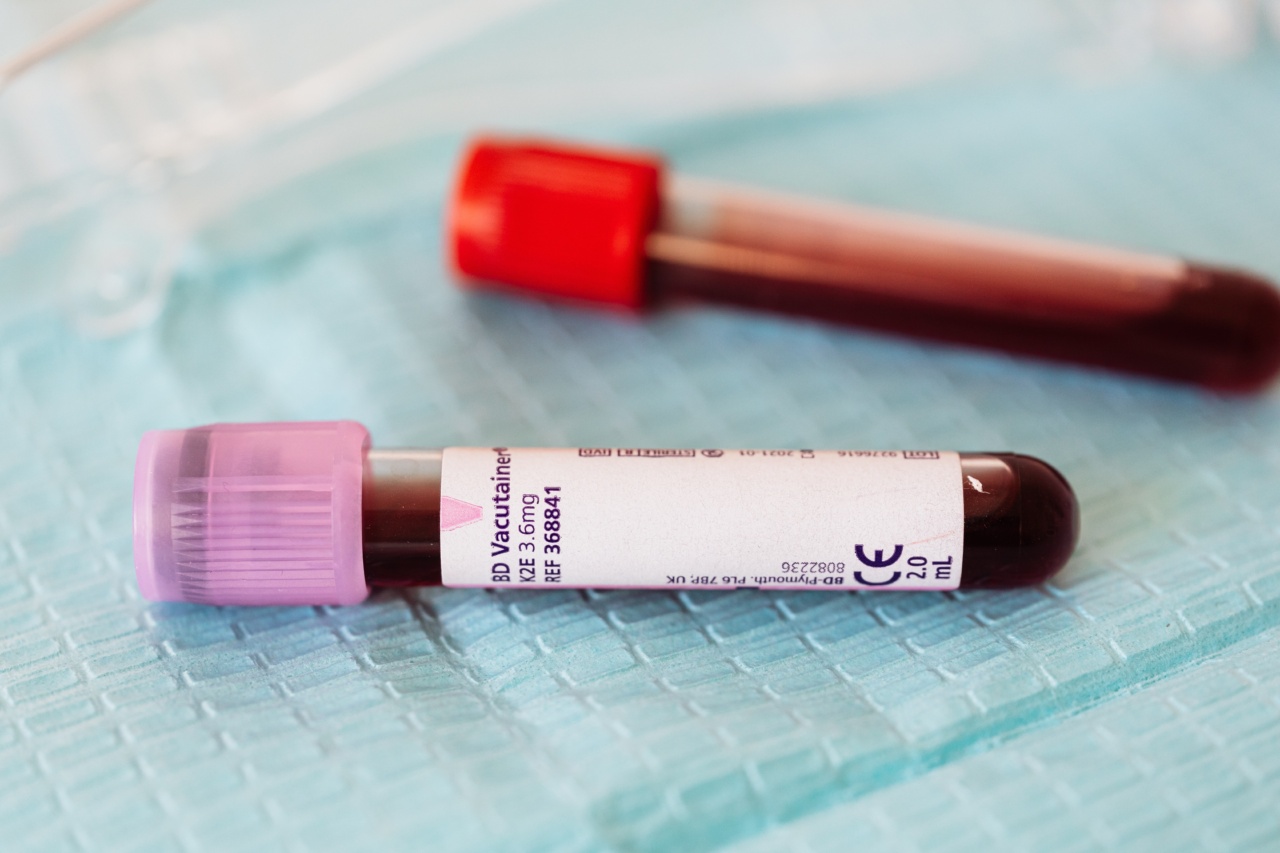When your beloved furry friend visits the veterinarian, there may be times when the doctor recommends a blood test. While this may sound alarming, it is a routine procedure that can provide valuable insights into your dog’s health.
Understanding the results of these tests can be overwhelming, especially if you are not familiar with the medical jargon. In this article, we will break down the different components of a dog’s blood test and explain what each result means.
By gaining a better understanding of your dog’s blood test results, you can work closely with your veterinarian to ensure your pet’s overall well-being.
Red Blood Cells
The first component of a dog’s blood test is the red blood cells (RBCs) or erythrocytes. The RBC count determines the number of red blood cells in a specific volume of blood.
A low RBC count can indicate anemia, which may be caused by various factors such as nutritional deficiencies, bleeding disorders, or even underlying diseases. Conversely, a high RBC count could point towards dehydration or conditions like polycythemia. Your veterinarian will interpret the RBC count in combination with other parameters to determine the cause of any abnormality.
White Blood Cells
White blood cells (WBCs) or leukocytes are a vital part of the immune system and play a crucial role in combating infections. The WBC count reveals the number of white blood cells present in the blood.
Low WBC counts might indicate viral infections, immunodeficiency, or bone marrow disorders. Conversely, elevated WBC counts could be an indication of bacterial infections, inflammation, or even stress.
Along with the WBC count, the veterinarian will evaluate other parameters to make an accurate diagnosis and decide on the appropriate course of treatment.
Platelets
Platelets, also known as thrombocytes, are responsible for blood clotting and preventing excessive bleeding. The platelet count determines the number of platelets in the blood sample.
A low platelet count, known as thrombocytopenia, can indicate various conditions such as immune-mediated diseases, infections, or certain medications. On the other hand, a high platelet count, known as thrombocytosis, might suggest inflammation, anemia, or even certain types of cancer. Your veterinarian will analyze the platelet count alongside other factors to understand the underlying cause.
Liver Function
The liver plays a vital role in metabolizing various substances and removing toxins from the body. Liver function tests assess different liver enzymes and proteins to evaluate the overall health of the liver.
Elevated liver enzymes, such as alanine aminotransferase (ALT) and aspartate aminotransferase (AST), may indicate liver damage or disease. Additionally, changes in metrics like albumin and bilirubin levels can provide additional insights into the functioning of the liver.
A thorough understanding of liver function test results helps veterinarians identify liver diseases early and plan appropriate treatment strategies.
Kidney Function
The kidneys are responsible for filtering waste products from the blood and maintaining fluid balance within the body.
Kidney function tests assess parameters like blood urea nitrogen (BUN), creatinine, and urine specific gravity to evaluate the health of the kidneys. High BUN and creatinine levels can indicate kidney dysfunction, which might be a result of various factors such as infections, toxins, or underlying diseases.
By monitoring kidney function tests, veterinarians can detect kidney diseases early and initiate necessary interventions to preserve renal health.
Thyroid Function
The thyroid gland regulates a dog’s metabolism, growth, and energy levels. Thyroid function tests measure thyroid hormone levels, including thyroxine (T4) and thyroid-stimulating hormone (TSH).
Low T4 levels might indicate hypothyroidism, which can cause weight gain, lethargy, and other clinical signs. On the other hand, high T4 levels could suggest hyperthyroidism, resulting in weight loss, increased appetite, and restlessness.
Your veterinarian will assess thyroid function test results to diagnose and manage any thyroid-related conditions effectively.
Blood Glucose Levels
Blood glucose levels are essential in evaluating a dog’s metabolism and detecting diabetes. Increased blood glucose levels, known as hyperglycemia, may be indicative of diabetes mellitus.
Alternatively, low blood glucose levels, known as hypoglycemia, can be associated with liver disease, insulinoma, or even insufficient food intake. Regular monitoring of blood glucose levels is crucial in managing diabetes and preventing potential complications.
Cholesterol Levels
Cholesterol is a type of fat that plays various roles in the body, such as producing hormones and aiding in digestion. Elevated cholesterol levels in dogs can contribute to the development of cardiovascular diseases.
High cholesterol may be influenced by factors such as genetics, poor diet, or underlying conditions. Monitoring cholesterol levels helps identify dogs at risk and allows for appropriate dietary and medical interventions.
Electrolyte Levels
Electrolytes such as sodium, potassium, and chloride are essential for maintaining proper hydration, nerve function, and muscle contractions in dogs.
An imbalance in electrolyte levels can be potentially life-threatening and often demands immediate attention. Regular monitoring of electrolyte levels is crucial in preventing complications and ensuring your dog’s well-being.
Coagulation Profile
A coagulation profile measures various factors involved in the blood clotting process. This test helps evaluate if your dog has any bleeding or clotting disorders.
Abnormalities in coagulation parameters can indicate diseases such as hemophilia, Von Willebrand’s disease, or liver dysfunction. Understanding the coagulation profile results ensures prompt diagnosis and suitable management of bleeding disorders.
Overall, blood tests provide crucial information about your dog’s health and help veterinarians make accurate diagnoses.
Remember, the interpretation of these results should always be done by a qualified veterinarian who has a comprehensive understanding of your dog’s medical history and clinical signs.





























